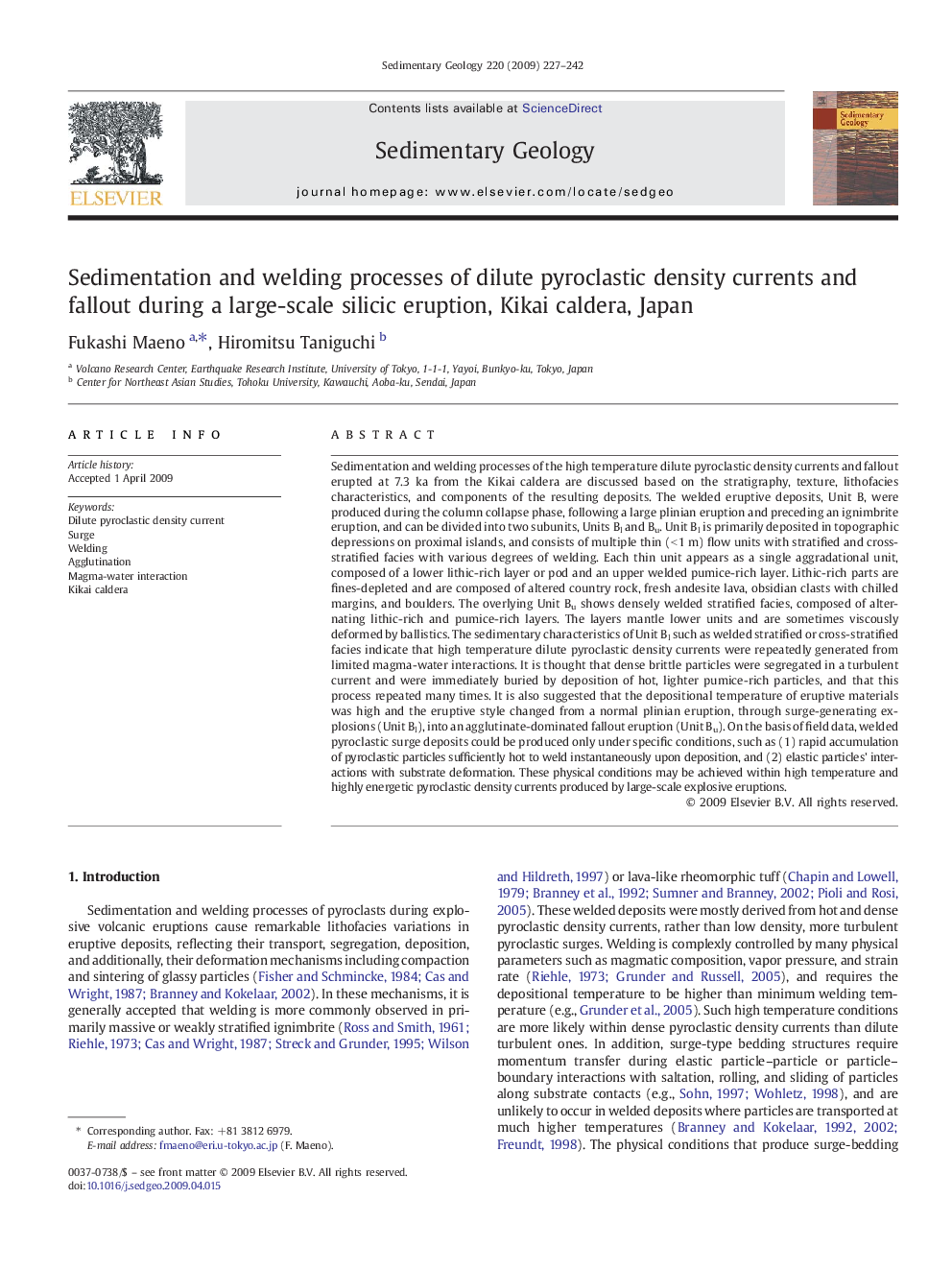| کد مقاله | کد نشریه | سال انتشار | مقاله انگلیسی | نسخه تمام متن |
|---|---|---|---|---|
| 4690269 | 1636135 | 2009 | 16 صفحه PDF | دانلود رایگان |
عنوان انگلیسی مقاله ISI
Sedimentation and welding processes of dilute pyroclastic density currents and fallout during a large-scale silicic eruption, Kikai caldera, Japan
دانلود مقاله + سفارش ترجمه
دانلود مقاله ISI انگلیسی
رایگان برای ایرانیان
موضوعات مرتبط
مهندسی و علوم پایه
علوم زمین و سیارات
فرآیندهای سطح زمین
پیش نمایش صفحه اول مقاله

چکیده انگلیسی
Sedimentation and welding processes of the high temperature dilute pyroclastic density currents and fallout erupted at 7.3Â ka from the Kikai caldera are discussed based on the stratigraphy, texture, lithofacies characteristics, and components of the resulting deposits. The welded eruptive deposits, Unit B, were produced during the column collapse phase, following a large plinian eruption and preceding an ignimbrite eruption, and can be divided into two subunits, Units Bl and Bu. Unit Bl is primarily deposited in topographic depressions on proximal islands, and consists of multiple thin (<Â 1Â m) flow units with stratified and cross-stratified facies with various degrees of welding. Each thin unit appears as a single aggradational unit, composed of a lower lithic-rich layer or pod and an upper welded pumice-rich layer. Lithic-rich parts are fines-depleted and are composed of altered country rock, fresh andesite lava, obsidian clasts with chilled margins, and boulders. The overlying Unit Bu shows densely welded stratified facies, composed of alternating lithic-rich and pumice-rich layers. The layers mantle lower units and are sometimes viscously deformed by ballistics. The sedimentary characteristics of Unit Bl such as welded stratified or cross-stratified facies indicate that high temperature dilute pyroclastic density currents were repeatedly generated from limited magma-water interactions. It is thought that dense brittle particles were segregated in a turbulent current and were immediately buried by deposition of hot, lighter pumice-rich particles, and that this process repeated many times. It is also suggested that the depositional temperature of eruptive materials was high and the eruptive style changed from a normal plinian eruption, through surge-generating explosions (Unit Bl), into an agglutinate-dominated fallout eruption (Unit Bu). On the basis of field data, welded pyroclastic surge deposits could be produced only under specific conditions, such as (1) rapid accumulation of pyroclastic particles sufficiently hot to weld instantaneously upon deposition, and (2) elastic particles' interactions with substrate deformation. These physical conditions may be achieved within high temperature and highly energetic pyroclastic density currents produced by large-scale explosive eruptions.
ناشر
Database: Elsevier - ScienceDirect (ساینس دایرکت)
Journal: Sedimentary Geology - Volume 220, Issues 3â4, 15 October 2009, Pages 227-242
Journal: Sedimentary Geology - Volume 220, Issues 3â4, 15 October 2009, Pages 227-242
نویسندگان
Fukashi Maeno, Hiromitsu Taniguchi,